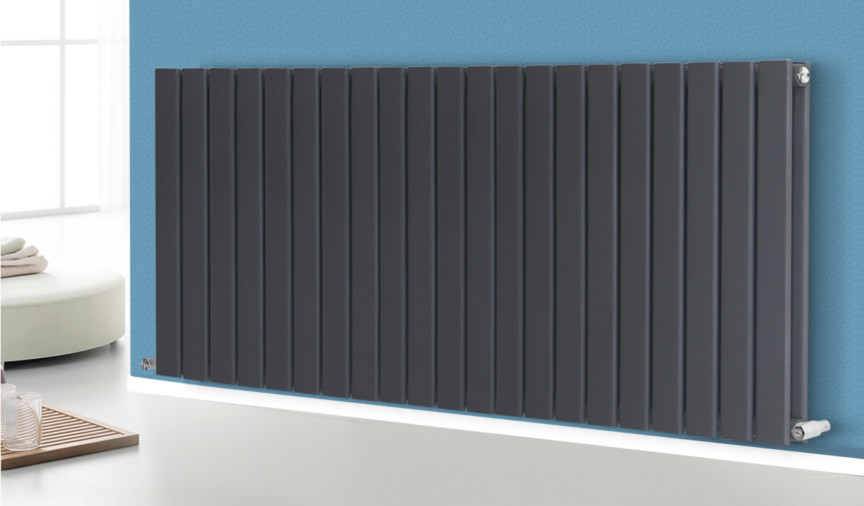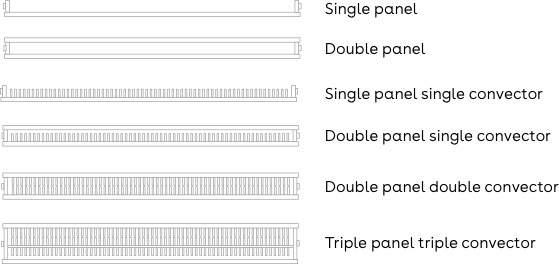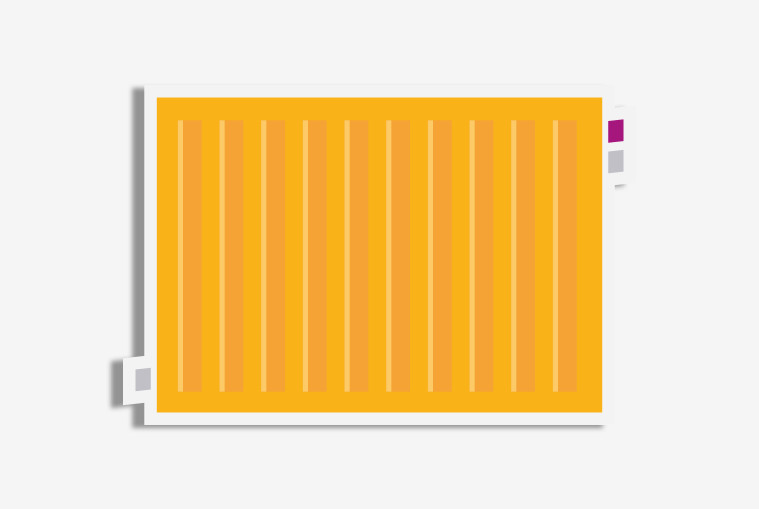15th June 2022
Radiators serve as your main source of heat by regulating the temperature in your home. When choosing a radiator, you have to consider a wide variety of factors partnered with an extensive selection of different designs, types and styles now available on the market. At Hometree, we have compiled a short but comprehensive guide to assist you in choosing the right radiator and get you on the road to a suitable and energy-efficient purchase.
How to calculate the radiator size you need
The best place to start with choosing a radiator is to calculate the BTU output required in order to heat the space you’re planning to heat. Sizing radiators for your chosen room is based on heat output measured using BTU/h (British Thermal Units per hour), which is calculated using the volume of the room and taking into account any eventual heat loss within that room. First, calculate the volume of the room with the following formula:
Length of the room (m) x Width of the room (m) x Height of the room (m) = Volume of the room (m3)
In a second step, you multiply the volume of the room with 153. The result is the BTU output required to heat the room.
However, as mentioned before, there are a few factors that play a role in increasing or decreasing the required BTU output. For instance, if your home is not insulated, you will require a radiator with a slightly higher BTU output. See the table below for details and adjust the BTU output accordingly.
| Factor | Adjust by |
|---|---|
| For solid floor | -10% |
| For non-insulated cavity walls | +10% |
| For foam-filled cavity walls | -20% |
| For upstairs bedrooms | -25% |
| For double glazing | -5% |
| For two outside walls | +15% |
| For three outside walls | +40% |
| For northern aspects | +10% |
| For missing loft insulation | +15% |
| For high ceilings – 3m | +20% |
The term radiator is slightly misleading, especially since they convect a lot more heat. Most radiators produce around 80% of their heat through convection leaving 20% through radiation. Radiators work when air is introduced through the bottom of the radiator and over the convection fins, causing atoms in the air to vibrate and create thermal energy. Convection currents are formed continuously when the air above your radiator is heated and then cooled. The currents being created in this process move heat around your room.
Usually the best place to install a radiator would be under a window, as the cold air would push more hot air into the room through heat conduction. The reason for choosing an area under a window is because it tends to be the coldest part of the room, unless your windows are double-glazed.
Types of radiators
As far as types of radiators are concerned, you typically have the choice between your everyday common radiators or a convector radiator (if you need help choosing a radiator, check out our guide here). In common radiators, the hot water will run top down through its components, which are all made from various metals. Convector radiators, however, circulate hot water through a tube surrounded by small fins, each increasing contact with the surrounding air and therefore amplifying the heat exchange between the radiator and the surrounding air. The advantage of choosing a convector radiator is that you can choose a smaller model than if you were to choose a common radiator that requires a larger surface area, therefore taking up more room.
Moving onto more technical terms, you may or may not have come across the following names for radiators: P1, K1, P+ and so on. When choosing a radiator and taking into consideration your calculations, you may need to look at single or double panel radiators as well as whether they come with a certain number of convection fins. Below is a brief guide to each type of radiator and what they offer:
| Name | Alternative Name | Type | Radiator Panels | Convection Fins |
|---|---|---|---|---|
| P1 | Single panel | Type 10 | 1 | 0 |
| K1 | Single panel one convector | Type 11 | 1 | 0 |
| P2 | Double panel | Type 20 | 2 | 0 |
| P+ | Double panel one convector | Type 21 | 2 | 1 |
| K2 | Double panel double convector | Type 22 | 2 | 2 |
| K3 | Double panel triple convector | Type 33 | 3 | 3 |



